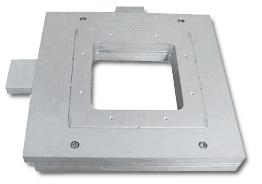

>>Nano-Max50
Additional Information
Drawing
Catalog Pages
Related Products
Nano-PDQ Series
Nano-T Series
Nano-H Series
Nano-HL Series
Nano-Bio Series
Nano-BioS Series
Accessories
Nano-Drive®/Nano-Drive®85
Questions?
E-Mail Us

Product Description |
|
The Nano-Max50 is a heavy duty, two axis piezo nanopositioning
stage designed to carry heavy experimental assemblies.
With a load capacity of 5 kg, the Nano-Max50 to be used
in applications such as precision positioning of cryostats
for low temperature optical microscopy. The low profile
and extra large aperture allows the Nano-Max50 to be
integrated into existing optical microscopes. Internal position sensors utilizing proprietary PicoQ® technology
provide absolute, repeatable position measurement with
picometer accuracy under closed loop control. Special
Nano-Max systems can be built with ranges of motion
that exceed the standard 50 microns. |
Technical Specifications |
|
| Range of motion (X) | 50 μm |
| Range of motion (Y) |
50 μm |
| Resolution | 0.1 nm |
| Resonant Frequency (X) | 1.5 kHz ±20% |
| Resonant Frequency (Y) | 1.0 kHz ±20% |
| Stiffness | 5.0 N/μm |
| θ roll, θ pitch (typical) | ≤1 μrad |
| θ yaw (typical) | ≤3 μrad |
| Recommended max. load (horizontal)* | 5 kg |
| Body Material | Al |
| Controller | Nano-Drive®/Nano-Drive®85 |
| * Larger load requirements should be discussed with our engineering staff. | |
Additional Information | |
Nano-Max50 Drawing |
Nano-Max50 Catalog Pages |
Related Products |
Copyright © 2024